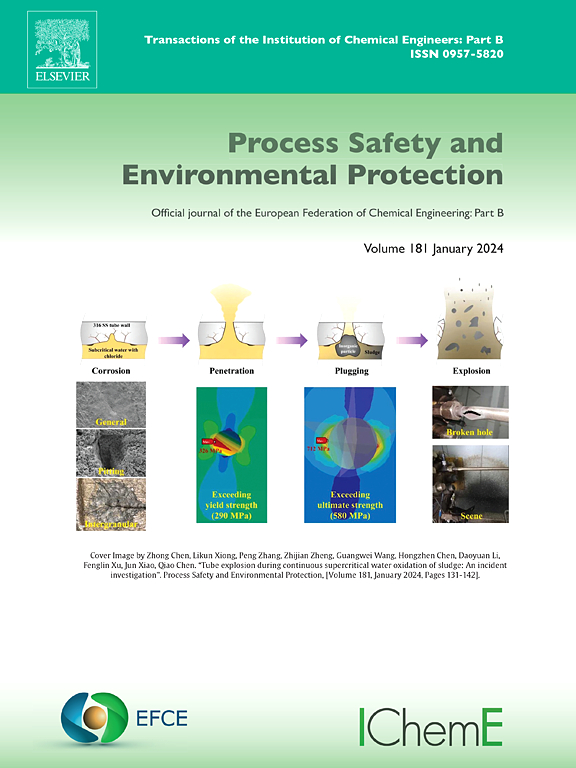Optimized Production and Functionalization of Water Hyacinth-Derived Biochar for Biocatalysis and Dye Adsorption
IF 6.9
2区 环境科学与生态学
Q1 ENGINEERING, CHEMICAL
引用次数: 0
Abstract
Water hyacinth-derived biochar, produced via hydrothermal liquefaction (HTL), has gained attention for its abundance, cost-effectiveness, and potential applications. This study focuses on developing water hyacinth biochar as a biocatalyst and bio-adsorbent. Using a Box-Behnken design and a robust statistical method, the research optimized biochar yield by evaluating key factors such as feedstock type, biomass ratios, and solvent concentrations. Results showed that water hyacinth provided the highest biochar yield, with lower solvent content enhancing productivity but negatively affecting bio-oil yield. The optimal conditions were identified as a solvent-to-biomass ratio of 1:18, a temperature of 260°C, and a pressure of 54水葫芦生物炭的优化制备及功能化研究
通过水热液化(HTL)生产的水葫芦衍生生物炭因其丰富、成本效益和潜在的应用而受到关注。本文主要研究水葫芦生物炭作为生物催化剂和生物吸附剂的开发。采用Box-Behnken设计和稳健的统计方法,研究通过评估原料类型、生物质比例和溶剂浓度等关键因素来优化生物炭产量。结果表明,水葫芦的生物炭产量最高,溶剂含量较低可提高生产效率,但对生物油产量有不利影响。最佳条件为溶剂与生物质比为1:18,温度260℃,压力54bar,反应90分钟,可获得41.92wt的生物炭和生物油产率。%和42.13wt。分别为%。值得注意的是,根据Box-Behnken模型,生物油产量增加到57.4wt。%,强调温度和生物量比的影响。所得生物炭在生物燃料生产中作为生物催化剂,产量为56.13wt。表明吸附效率为7.23 ~ 10.21wt.%。技术经济分析(TEA)证实了这项工作在经济可行性、生命周期评估和环境影响方面的可行性。这项研究强调了水葫芦生物炭在推进可再生能源和促进净零排放方面的潜力。
本文章由计算机程序翻译,如有差异,请以英文原文为准。
求助全文
约1分钟内获得全文
求助全文
来源期刊

Process Safety and Environmental Protection
环境科学-工程:化工
CiteScore
11.40
自引率
15.40%
发文量
929
审稿时长
8.0 months
期刊介绍:
The Process Safety and Environmental Protection (PSEP) journal is a leading international publication that focuses on the publication of high-quality, original research papers in the field of engineering, specifically those related to the safety of industrial processes and environmental protection. The journal encourages submissions that present new developments in safety and environmental aspects, particularly those that show how research findings can be applied in process engineering design and practice.
PSEP is particularly interested in research that brings fresh perspectives to established engineering principles, identifies unsolved problems, or suggests directions for future research. The journal also values contributions that push the boundaries of traditional engineering and welcomes multidisciplinary papers.
PSEP's articles are abstracted and indexed by a range of databases and services, which helps to ensure that the journal's research is accessible and recognized in the academic and professional communities. These databases include ANTE, Chemical Abstracts, Chemical Hazards in Industry, Current Contents, Elsevier Engineering Information database, Pascal Francis, Web of Science, Scopus, Engineering Information Database EnCompass LIT (Elsevier), and INSPEC. This wide coverage facilitates the dissemination of the journal's content to a global audience interested in process safety and environmental engineering.
 求助内容:
求助内容: 应助结果提醒方式:
应助结果提醒方式:


